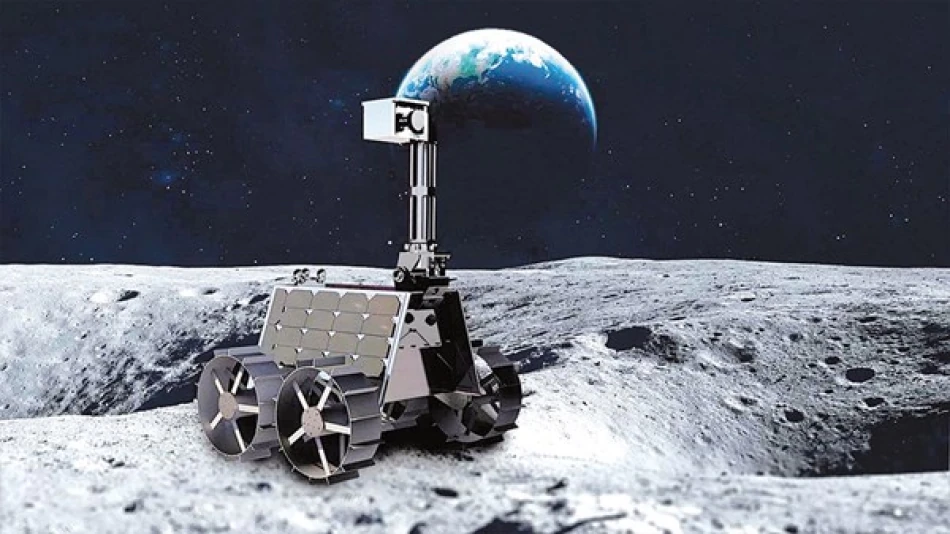
UAE's Ambitious Lunar Aspirations: Reaching for the Moon
UAE Positions Itself as Major Space Power Through Ambitious Lunar Exploration Program
The United Arab Emirates is rapidly establishing itself as a formidable player in global space exploration, with the Mohammed bin Rashid Space Centre spearheading an ambitious lunar program that includes participation in NASA's Artemis Lunar Gateway project and development of the advanced Rashid 2 rover. This strategic push represents more than scientific curiosity—it's a calculated move to secure the UAE's position as a regional space hub while building critical capabilities for humanity's next chapter in deep space exploration.
The Lunar Gateway: UAE's Ticket to Elite Space Club
The UAE's participation in the Lunar Gateway project—a cornerstone of NASA's Artemis program—marks a significant diplomatic and technological achievement. The Emirates will develop and operate the "UAE Gateway," a critical component that will serve multiple functions: enabling spacewalks, facilitating crew and research transfers, and providing additional docking capabilities for spacecraft.
This isn't merely a supporting role. By securing responsibility for such a vital component, the UAE has effectively guaranteed its seat at the table for future lunar missions and Mars exploration planning. The Lunar Gateway will serve as humanity's first deep space station, orbiting the Moon and acting as a staging point for both crewed and uncrewed missions to the lunar surface and eventually Mars.
Strategic Positioning in a New Space Race
The timing of the UAE's lunar ambitions coincides with a renewed global focus on Moon exploration, driven by both scientific interest and resource potential. Unlike the Cold War-era space race between superpowers, today's lunar exploration involves a complex web of international partnerships, private companies, and emerging space nations—exactly the environment where a strategically positioned country like the UAE can punch above its weight.
Rashid 2: Learning from Setbacks to Build Success
The development of the Rashid 2 rover demonstrates the UAE's mature approach to space exploration. Rather than being deterred by the challenges faced during the Rashid 1 mission's lunar landing attempt in 2023, the space program has leveraged the experience and data collected to create a more capable successor.
Rashid 2 features enhanced mobility systems for navigating the lunar surface, high-resolution imaging capabilities, and advanced scientific instruments designed to analyze lunar soil composition. Perhaps most importantly, it incorporates improved communication systems for maintaining contact with Earth-based mission control—addressing one of the critical challenges in lunar operations.
Unexplored Territory as Competitive Advantage
The rover is specifically designed to explore previously uncharted lunar regions, potentially giving the UAE access to unique scientific discoveries. In an era where lunar real estate and resources may become increasingly valuable, being first to thoroughly study certain areas could provide significant advantages for future missions and resource utilization.
Economic and Strategic Implications
The UAE's lunar program serves multiple strategic objectives beyond scientific advancement. The initiative supports the country's knowledge economy development, potentially creating new high-tech industries and attracting international space companies to establish regional headquarters in the Emirates.
For investors and the space industry, the UAE's commitment signals a reliable, well-funded partner for long-term projects. The country's track record of completing ambitious infrastructure projects, combined with its strategic location between East and West, makes it an attractive hub for space commerce and research.
Human Capital Development
Perhaps most critically, these projects are developing a generation of Emirati engineers and scientists with hands-on experience in spacecraft design, remote mission control, and scientific data analysis. This human capital development ensures the UAE won't remain dependent on foreign expertise for future space endeavors.
The Moon as Humanity's Next Frontier
The UAE's focus on lunar exploration aligns with scientific consensus that the Moon represents humanity's most logical stepping stone to Mars and deeper space exploration. The presence of frozen water in the Moon's polar regions could support sustainable long-term missions, while the lunar environment provides an ideal testing ground for technologies destined for more distant worlds.
Unlike previous space programs driven primarily by national prestige, today's lunar exploration is increasingly focused on practical applications: resource utilization, technology development, and establishing permanent human presence beyond Earth. The UAE's participation in this effort positions the country at the forefront of what may become the most important economic and scientific frontier of the 21st century.
Regional Leadership Through Innovation
By establishing itself as a regional center for space innovation, the UAE is following a familiar playbook—the same strategy that made Dubai a global aviation hub and positioned the Emirates as a bridge between emerging and established economies. The space sector represents the next evolution of this approach, with potentially even greater long-term returns.
The success of these lunar programs could establish the UAE as the Middle East's primary space hub, attracting international partnerships, research facilities, and commercial space ventures. As space exploration transitions from government-led initiatives to commercial enterprises, countries with established capabilities and international partnerships will be best positioned to capture the economic benefits of the emerging space economy.
 Layla Al Mansoori
Layla Al Mansoori







